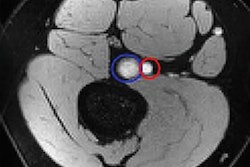Monday, November 28 | 3:30 p.m.-3:40 p.m. | SSE17-04 | Room N228
In the battle to help patients quit smoking successfully, real-time functional MRI (fMRI) may provide the ammunition to succeed once and for all. The goal is to reduce neural activity in certain regions of the brain that are most affected by nicotine exposure, according to researchers from Germany."Real-time fMRI is the basic requirement for the application of neurofeedback and for the modulation of one's own brain activity in an MRI scanner," explained study presenter Dr. Marco Paolini from Ludwig Maximilian University Hospitals in Munich. "Using real-time fMRI, the patient's current brain activity can be measured, analyzed, and transformed to a feedback signal in a few seconds. In contrast, conventional MRI shows the anatomy of a patient's brain including different pathological processes like inflammation or oncological diseases without functional information."
In this study, the researchers performed three real-time fMRI neurofeedback sessions each on 43 patients with tobacco dependency within four weeks of the patients receiving professional help to stop smoking. Twenty-six patients received real feedback for the addiction, while 17 people received phony feedback.
A preliminary analysis at the six-month follow-up showed different brain activation patterns in five patients who abstained from smoking, compared with eight others who relapsed. Among the subjects who maintained abstinence, real-time fMRI showed extensive patterns of reduced activity in several brain regions after the third neurofeedback procedure, compared with the first run. Patients who returned to smoking expressed slight or no differences in activation patterns in the same brain regions between the first and third sessions.
"There are two major benefits that seem possible considering our findings," Paolini told AuntMinnie.com. "The possibility to identify different patient groups as early as possible based on different functional brain states: those who are immediately receptive to this kind of neurofeedback, those who need more or more-intensive neurofeedback, and those who do not benefit from this application."


.fFmgij6Hin.png?auto=compress%2Cformat&fit=crop&h=100&q=70&w=100)





.fFmgij6Hin.png?auto=compress%2Cformat&fit=crop&h=167&q=70&w=250)











